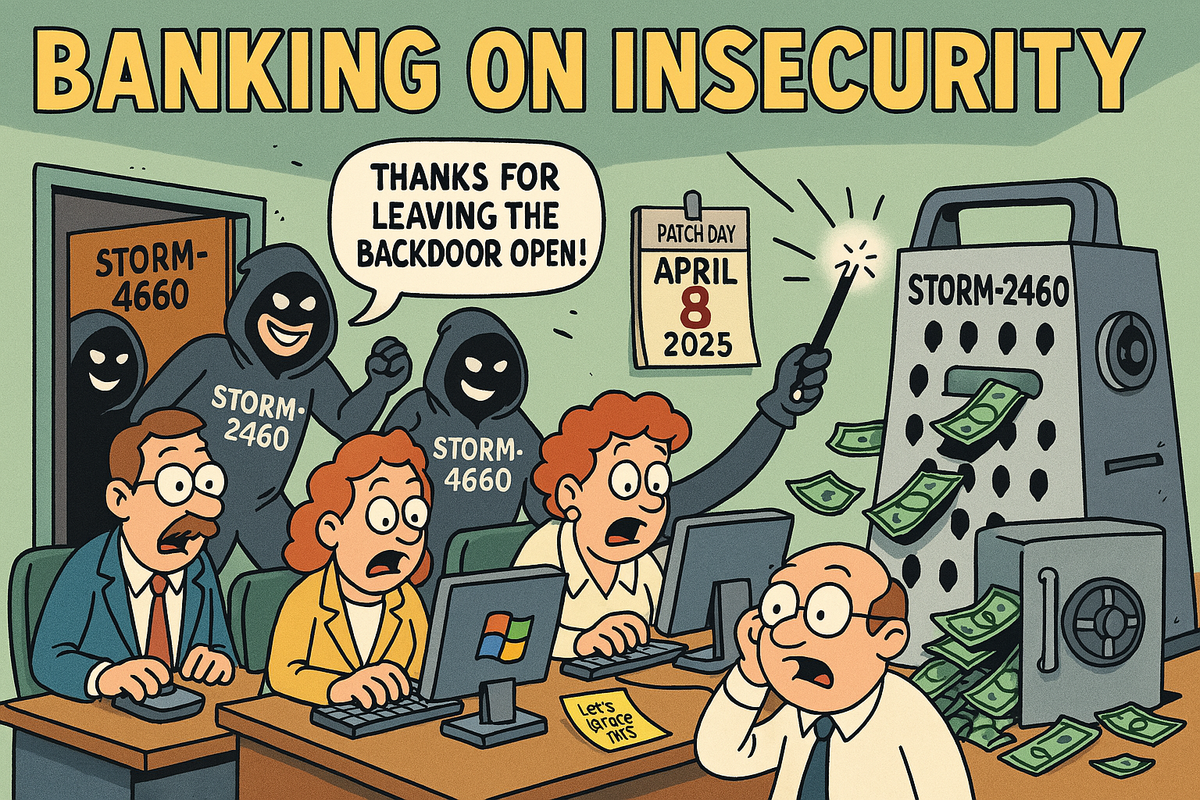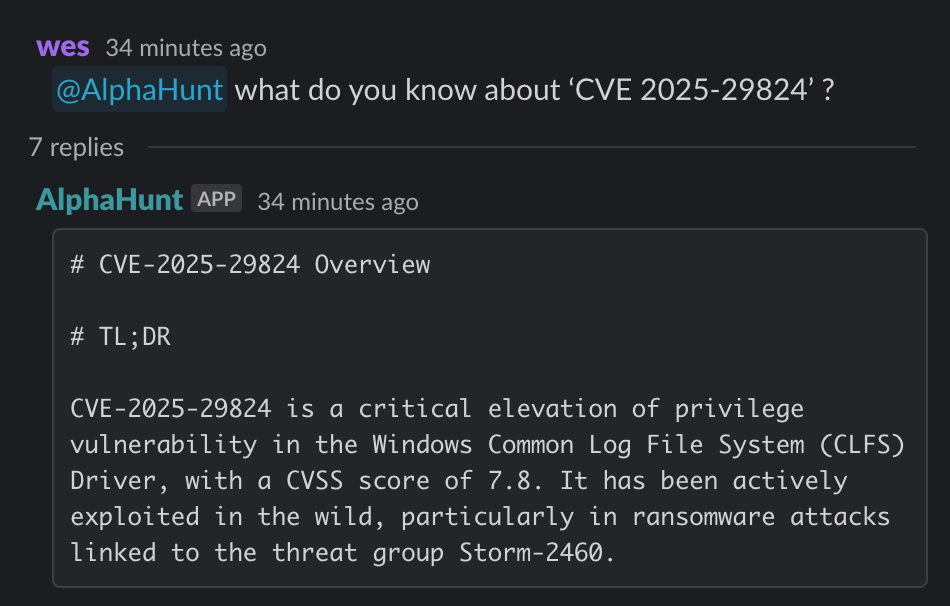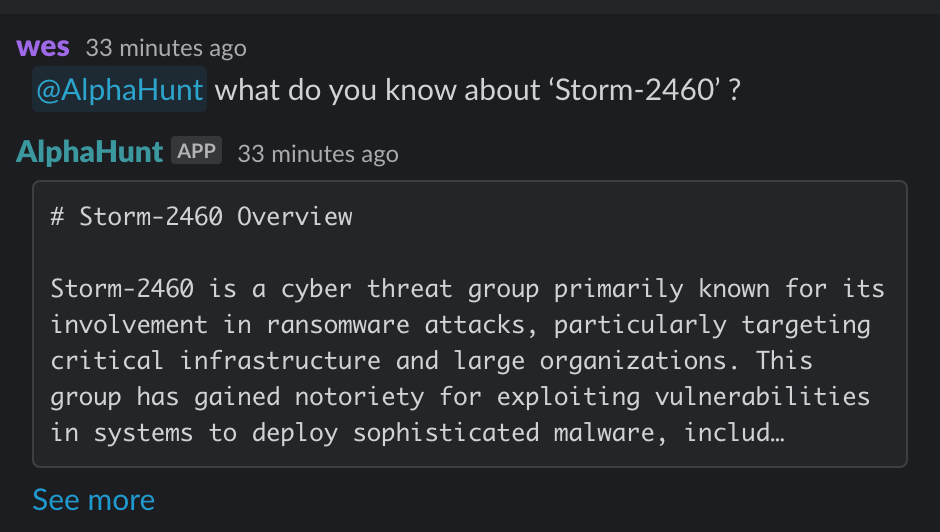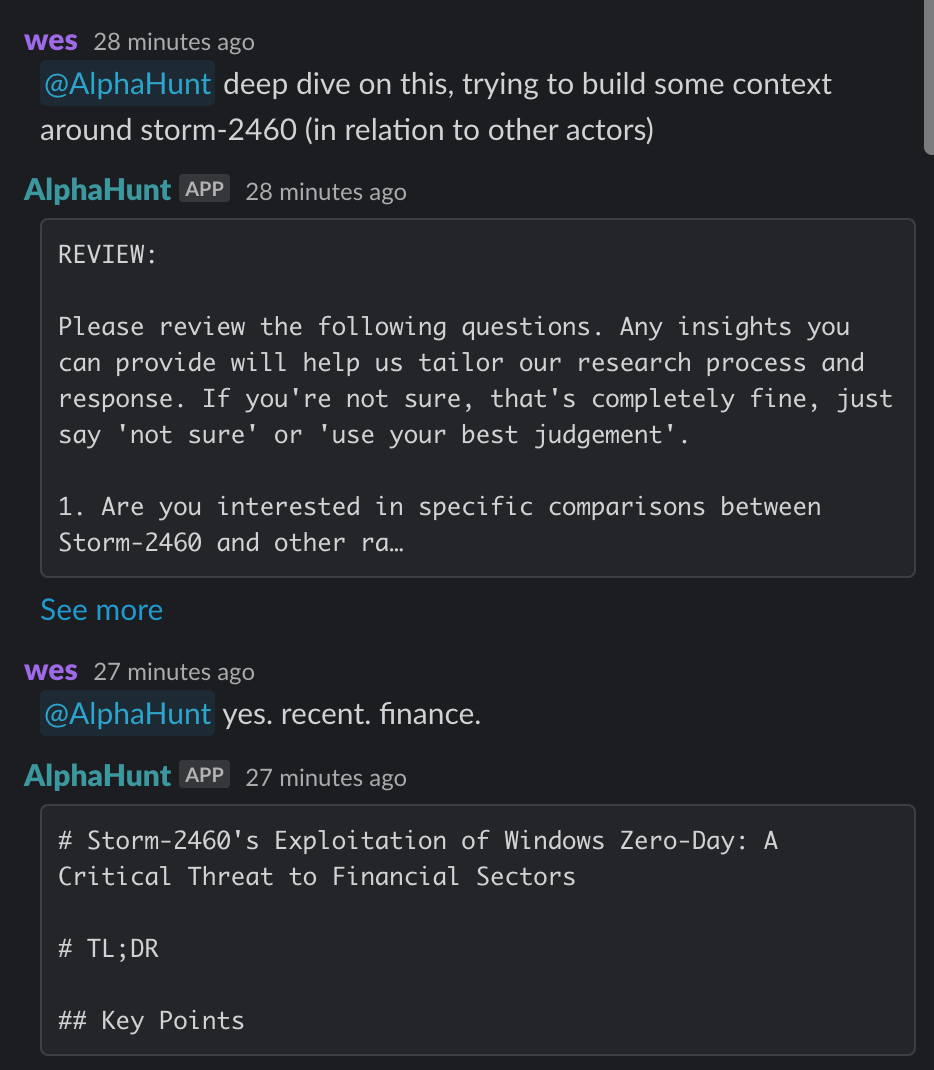Storm-2460's Exploitation of Windows Zero-Day: Threat Actor similarity in focus.
Storm-2460, a cyber threat group, is actively exploiting a zero-day vulnerability (CVE-2025-29824) in the Windows Common Log File System (CLFS), primarily targeting the finance sector and other high-value industries.




We started out with a simple CVE...
(Have feedback? Did something resonate with you? Did something annoy you? Just hit reply! :))
Ever get compound questions like this:
- what do you know about ‘CVE 2025-29824’ ?
- what do you know about ‘Storm-2460’ ?
- deep dive on this, trying to build some context around storm-2460 (in relation to other actors)
Are you ready to level up your skillset? Get Started Here!
TL;DR
Key Points
-
- Storm-2460 is exploiting a zero-day vulnerability (CVE-2025-29824) in Windows, targeting the finance sector.
- Immediate patching and enhanced security measures are crucial to mitigate this threat.
-
- The group uses sophisticated malware, PipeMagic, to maintain persistence and execute attacks.
- Implementing advanced endpoint detection and response (EDR) solutions is recommended.
-
- Financial institutions face risks of data breaches, operational disruptions, and regulatory penalties.
- Regular software updates and comprehensive incident response plans are essential.
Research
Executive Summary
Storm-2460, a cyber threat group, is actively exploiting a zero-day vulnerability (CVE-2025-29824) in the Windows Common Log File System (CLFS), primarily targeting the finance sector and other high-value industries. This vulnerability allows attackers to escalate privileges, gaining SYSTEM-level access to compromised systems. The group's use of the PipeMagic malware, which acts as a backdoor, facilitates their attacks and maintains persistence.
Recent activities have shown Storm-2460 targeting sectors such as finance, IT, and real estate across the U.S., Venezuela, Spain, and Saudi Arabia. The exploitation of this vulnerability has led to widespread ransomware deployment, posing significant risks of data breaches, operational disruptions, and potential regulatory consequences for financial institutions.
Comparatively, Storm-2460's tactics differ from groups like RansomEXX and Conti, focusing more on direct exploitation of vulnerabilities rather than relying on affiliate structures or social engineering. The exploitation of CVE-2025-29824 highlights the need for immediate patch management, enhanced EDR solutions, and comprehensive user training programs to mitigate these threats.
Looking forward, ransomware groups are expected to evolve their tactics, potentially incorporating artificial intelligence for more sophisticated attacks. Financial institutions must remain vigilant, investing in cybersecurity measures and participating in threat intelligence sharing to stay ahead of emerging threats.
Technical Details
Recent Activities of Storm-2460
Storm-2460 has been linked to a series of ransomware attacks targeting various sectors, including finance, IT, and real estate. The group has exploited the Windows Common Log File System (CLFS) vulnerability (CVE-2025-29824) to gain unauthorized access and deploy ransomware. Key points include:
-
Exploitation of CVE-2025-29824: This zero-day vulnerability allows attackers to escalate privileges from a standard user to SYSTEM-level access, facilitating deeper infiltration into targeted systems. Microsoft has confirmed that Storm-2460 has used this vulnerability in attacks against organizations in the U.S., Venezuela, Spain, and Saudi Arabia.
-
Use of PipeMagic Malware: The group has utilized PipeMagic, a malware that functions as both a backdoor and a gateway, to facilitate their attacks. This malware has been observed in previous incidents and is known for its ability to maintain persistence and execute further malicious actions.
-
Targeted Sectors: The attacks have primarily focused on the finance sector in Venezuela, IT and real estate sectors in the U.S., a Spanish software company, and retail organizations in Saudi Arabia. The exploitation of the CLFS vulnerability has allowed for widespread deployment of ransomware within these environments.
Comparison of Tactics, Techniques, and Procedures (TTPs)
When comparing the TTPs of Storm-2460 with those of RansomEXX and Conti, several similarities and differences emerge:
-
RansomEXX: This group has also been known to exploit zero-day vulnerabilities, but they often rely on social engineering tactics to gain initial access. Their ransom notes have been found to resemble those of Storm-2460, indicating potential overlaps in operational methods.
-
Conti: Conti has a well-documented history of using ransomware-as-a-service (RaaS) models, allowing affiliates to deploy their ransomware in exchange for a share of the profits. Storm-2460, while sophisticated, appears to operate with a more direct approach, focusing on exploiting specific vulnerabilities to execute their attacks without the same level of affiliate structure.
Zero-Day Vulnerabilities Exploited
The primary zero-day vulnerability exploited by Storm-2460 is CVE-2025-29824, which is a privilege escalation vulnerability in the Windows CLFS. This vulnerability allows attackers to gain elevated privileges, making it easier to deploy ransomware and conduct further malicious activities within compromised networks. The implications for financial institutions are severe, as this could lead to data breaches, financial theft, and significant operational disruptions.
Implications for Financial Institutions
The exploitation of CVE-2025-29824 by Storm-2460 poses a significant risk to financial institutions. The ability to escalate privileges means that attackers can gain access to sensitive data and systems, potentially leading to:
- Data Breaches: Unauthorized access to customer data and financial records.
- Operational Disruption: Ransomware can halt operations, leading to financial losses and reputational damage.
- Regulatory Consequences: Financial institutions may face penalties for failing to protect sensitive data adequately.
Recommendations, Actions, Suggested Pivots, Forecasts and Next Steps..
(Subscribers Only)



![[DEEP RESEARCH] Token Factory: The 5 Costliest US Breaches of 2025](/content/images/size/w600/2026/01/z.png)

